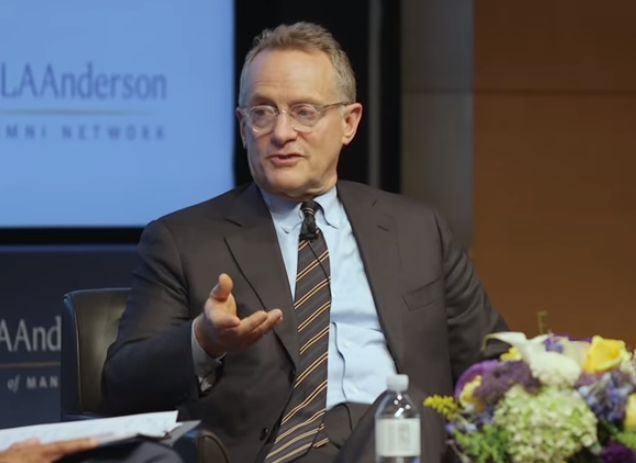Hoping for or expecting monster returns on your investments is unreasonable, and ultimately puts your investments in danger. And billionaire investor extraordinaire Howard Marks, who has written two books on the subject, urges investors to set reasonable goals for themselves and their returns.
But what is reasonable and what isn’t?
Marks says it makes sense to aim for returns in the high single digits, 8 to 10 percent, or even perhaps low single digits. Aiming for the high teens or anything more is setting yourself up for failure unless you are among the most experienced, knowledgeable and skilled investors.
Marks also said to temper expectations about consistency. The market might have averaged a 10 percent gain per year, but each year can be wildly different. A good rule of thumb, Marks says, is the to ask yourself the age-old question: Is this too good to be true?
Per Guru Focus:
According to Marks, higher returns are “unnatural” because they must involve some combination of the following elements:
- An economic environment that is very depressed, and then followed by a strong environment.
- Exceptional skill at investing.
- Much higher than normal risk.
- Plenty of leverage.
- Good luck.
There are problems with each of these factors if they are part of an investment strategy, even exceptional investing skill, which is rare among market players.
Ignoring the need to understand “unnatural” returns can lead to a lot of hurt. Marks made the case that the Bernie Madoff scandal epitomized such returns, which were simply too good to be true. As we learned in 2008, Madoff had been running a $65 billion Ponzi scheme, a scam in which a fund manager steals from later investors to pay above-average returns to earlier investors.
The returns in the Madoff scheme were not over the top; they averaged about 10% per year, and they were quite amazingly consistent year after year. What’s more, the fund rarely reported down months.
As Marks wrote, there was no reasonable explanation for such sunny returns:
“His investors could say either “I checked it out” or “I think it makes sense,” but it was impossible to say “I checked it out, and it makes sense.” His method and results were simply unsupportable: there weren’t enough options outstanding to accommodate the capital he managed, and even if there were, the strategy he described couldn’t produce the virtual absence of losing months he claimed. But people regularly suspend disbelief and accept unreasonable expectations when they’re told free money is available.”
The author next turned to the problem of when to invest in down markets — specifically, how you can know when the cycle has hit its bottom. To that, he has a simple answer, which is that no can know. Bottoms can only be identified in retrospect.
Even fair value is of no use. That’s because swings of the investing pendulum frequently overshoot, and prices drop well below the elusive fair value mark. Taking the analysis a step further, Marks said there are three times where you can buy an asset that has been declining in price:
- On the way down.
- At the bottom.
- On the way up.
Buying at the bottom obviously makes no sense, for the reason noted above. If we wait to buy when the price has started to increase, after hitting what appears to be the bottom, then others will be jumping back into the market as well, pushing up prices.
So that leaves just buying on the way down. This is, of course, known as catching falling knives, which almost everyone advises against. Marks takes a contrarian position, using a quotation from Voltaire, “The perfect is the enemy of the good.” In the investing world, we cannot buy only when conditions are perfect, such as at the bottom of a cycle.
At Oaktree Capital, the investment management company Marks co-founded and co-manages, they have a strategy for such situations. They ignore the perfect time and instead buy if they think something is cheap (presumably well below its intrinsic value). If it gets even cheaper, they will buy even more shares. Waiting for an absolute bottom is not in their strategy at all.
Going beyond individual investors, the author also believes that unrealistic expectations can collectively lead to bubbles and crashes. Between 2004 and 2007, for example, many investors were saying to themselves that while high single-digit returns would be nice, gains of 20% or 30% should be within reach.
That was the wrong approach. They should have been asking themselves whether their goals were reasonable and what they would have to do to get such high returns. Did they acknowledge they would have to invest in riskier stocks and bonds, or borrow for leverage?
For Marks, the goal should be “good-enough returns.” Everything always comes back to risk-adjusted returns. Only those with finely honed skills and suitable experience should expect returns of more than low double-digit returns.




